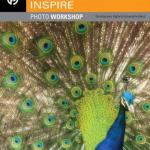
Some people learn best when they start at the basics: This is a camera. Press this button to make it go ‘click’, and it takes a picture. Change the aperture to… etc. Me, I like to work the other way around – I learned a long time ago that photography – like computers, cars, etc – is interesting mostly for its results, rather than for its technology. Who cares if your camera can do 1/4,000 second or 1/12,000 second shutter times… Unless, of course, you need the faster shutter time to achieve something.
Learning by example, then, is the act of starting at the other end of the learning process: Find a photograph you like, or come up with a crazy idea, and then start stepping backwards: What do I need to do to create the photograph I have seen / imagined / come up with.
What’s the point?

Boats on Ha Long Bay in Vietnam. Taken with a Canon Digital IXUS at ISO 200, f/8 and 1/30 second exposure, at widest possible zoom
The interesting thing of learning by example is that there’s a pretty good chance you miss whole fields of photography. If ISO or lens length isn’t relevant to the shots you’re taking, you’ll never have to learn them… It’s kind of like mathematics: I could never wrap my head around calculus. Not because I don’t have the brain capacity (or, at least, I would like to think), but because I never saw the point. Just like I never saw the point of geometry, until someone managed to bring it to life by explaining how I could apply it to my life – suddenly, I had a need for a bit of knowledge, so I went out to acquire the necessary information and understanding, and was able to do the calculations I needed.
I’m a strong believer in doing the same thing with photography: If you don’t think you need something, well, you probably don’t. You’ll eventually find out that the techniques you’re using at the moment are limiting you – or making the things you’re trying to achieve more difficult – but that’ll be new motivation to learn something new again.
So, how do you do it?

My sister in Vietnam. Taken at ISO 100 with a 50mm f/1.4 prime lens stopped wide open, aperture mode. Shutter time was whatever the camera suggested. Slightly desaturated the RAW file to get a more timeless 'feel'
Well, it’s easy: Find a source of inspiration. Personally, I use all sorts of sources: Magazines are a great starting point (especially amateur photography magazines like Digital Camera Magazine or similar – also check out PhotoRadar). Flickr, of course, is a marvellous source as well. The problem with on-line, however, is the nature of computer screens. Call me old-fashioned, but I really prefer the high-resolution way of looking at photography: Prints, books, magazines, etc.
The other problem is that, even on Flickr, not that many photographers take you through their way of thinking, or their technique for getting the shot (I love the idea of the How I Took It group, but so far, only 22 photos have been posted, which seems like a huge shame). Luckily, you can often ask questions, and many are good enough to help you along, but that’s still not an ideal way of getting tucked in. (Of course, I’m also guilty of this, but if you find any photos in my photo stream which you’d like explained and deconstructed, I’d be more than happy to – leave a comment and I’ll dig out the info!)
Using books for inspiration

Photos that Inspire is one of the few books I'm aware of that goes into detail about the individual photos, with how, why, where and when they were taken - perfect to start learning
There are a lot of fantastic photography books out there, but many of them are by a single photographer – the problem with that is that they have only a limited number of styles, and most of them say nothing about how the photos were taken – you’re expected to enjoy them as art, rather than as part of a learning experience. As you get better, this is a sensible approach, but when you’re starting out, it can be mighty frustrating.
The best one I’ve found that does things a little differently is Photos that Inspire (Amazon US / Amazon UK) is in the same series as my macro book – the Photo Workshop series published by Wiley – and it’s a peach.
For one thing, it has a couple of my photos in there (which obviously makes it a much better book already) but the important bit is that it contains tons of photographs taken by professional photographers – who explain why and how the shots were taken. It’s like a small art gallery with a personal guide by each of the individual photographers – and a fantastic place to start learning, of course.
How do you learn?
So, that’s my take on it – How do you prefer to learn about photography? Where do you get your inspiration? There’s a comment box down there somewhere…
Do you enjoy a smattering of random photography links? Well, squire, I welcome thee to join me on Twitter - Follow @Photocritic
© Kamps Consulting Ltd. This article is licenced for use on Pixiq only. Please do not reproduce wholly or in part without a license. More info.





